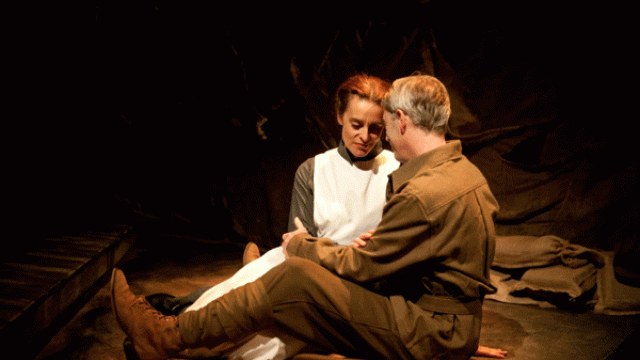The Girls in Grey
It’s hard to describe the emotion of touching an archived letter, even if your hand is in a glove. In front of you is paper that a real person from the past has written on, in their voice and the language of the time. Traumas and excitements are very real when read in the first person. The Girls in Grey aims to convey that emotion by weaving into the script passages taken from diaries and letters of women who served as nurses with the Australian Army during World War I. Doing so gave the play authenticity, and made the inevitable tragedies more poignant.
Director Tom Healey’s approach was stylised and modern. The actors moved across the stage in a way that was almost regimented, and various daily tasks—donning of the uniform, hand washing, tending the wounded—were repeated with such quiet reverence they took on the feel of a ritual. With such repetitive motions, the variation and character development was carried largely by the words. The inclusion of the archival material was seamless, and the language authentic. However, when the voices did fall away leaving only the slow reverential movement, the play was at its most moving.
Some parts of the script echo through different characters or are spoken in unison, with tone play reminiscent of Andrew Bovell’s work. Between these were moments when the nurses were able to meet with their sweethearts. It might have made the play more dynamic to have those segments played naturalistically to contrast with the frantic action of the nursing scenes.
The three central characters are uniformly good and brave, and only criticise Army decisions in the mildest of terms. That might be a consequence of the script having been derived from letters and diaries where the authors are likely to have always shown themselves in a good light. The four actors were all very capable in their roles.
I enjoyed hearing the story from a novel perspective, given that Australians’ experience in World War I is familiar territory. Ultimately, the material was respectfully handled, faithful to the sources, and a timely Anzac Day reminder of why that particular war is so culturally important.
Cathy Bannister
Subscribe to our E-Newsletter, buy our latest print edition or find a Performing Arts book at Book Nook.

